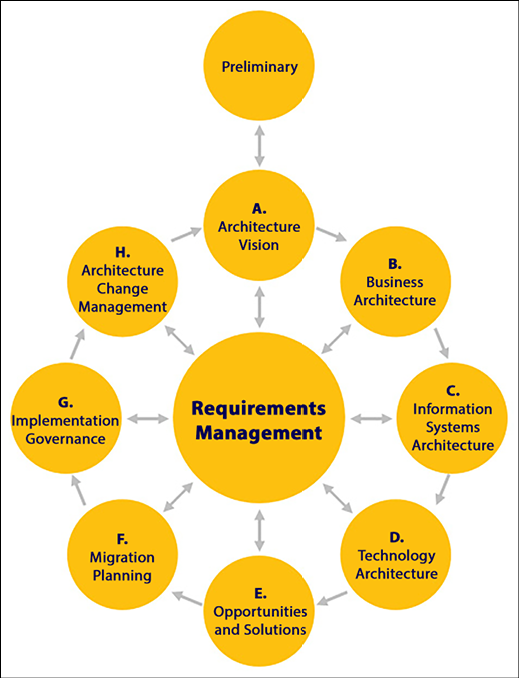Setting out a real strategy for multi-cloud
A cloud strategy emerges from the business and the business goals. Business goals, for example, could include the following:
- Creating more brand awareness
- Releasing products to the market faster
- Improving profit margins
Business strategies often start with increasing revenue as a business goal. In all honesty: that should indeed be a goal; otherwise, you’ll be out of business before you know it. The strategy should focus on how to generate and increase revenue. We will explore more on this in Chapter 2, Business Acceleration Using a Multi-Cloud Strategy.
How do you get from business goals to defining an IT strategy? That is where enterprise architecture comes into play. The most used framework for enterprise architecture is TOGAF, although there are many more frameworks that can be used for this. Companies will not only work with TOGAF but also adopt practices from IT4IT and ITIL to manage their IT, as examples.
The core of TOGAF is the ADM cycle, short for Architecture Development Method. Also, in architecting multi-cloud environments, ADM is applicable. The ground principle of ADM is B-D-A-T: the cycle of business, data, applications, and technology. This perfectly matches the principle of multi-cloud, where the technology should be transparent. Businesses have to look at their needs, define what data is related to those needs, and how this data is processed in applications. This is translated into technological requirements and finally drives the choice of technology, integrated into the architecture vision as follows:

Figure 1.3: The ADM cycle in the TOGAF
This book is not about TOGAF, but it does make sense to have knowledge of enterprise architecture and, for that matter, TOGAF is the leading framework. TOGAF is published and maintained by The Open Group. More information can be found at https://www.opengroup.org/togaf.
The good news is that multi-cloud offers organizations flexibility and freedom of choice. That also brings a risk: lack of focus, along with the complexity of managing multi-cloud. Therefore, we need a strategy. Most companies adopt cloud and multi-cloud strategies since they are going through a process of transformation from a more-or-less traditional environment into a digital future. Is that relevant for all businesses? The answer is yes. In fact, more and more businesses are coming to the conclusion that IT is one of their core activities.
Times have changed over the last few years in that respect. At the end of the nineties and even at the beginning of the new millennium, a lot of companies outsourced their IT since it was not considered to be a core activity. That has changed dramatically over the last 10 years or so. Every company is a software company—a message that was rightfully quoted by Microsoft CEO Satya Nadella, following an earlier statement by the father of software quality, Watts S. Humphrey, who already claimed at the beginning of the millennium that every business is a software business.
Both Humphrey and Nadella are right. Take banks as an example: they have transformed to become more and more like IT companies. They deal with a lot of data streams, execute data analytics, and develop apps for their clients. A single provider might not be able to deliver all of the required services, hence these companies look for multi-cloud, best-of-breed solutions to fulfill these requirements.
These best-of-breed solutions might contain traditional workloads with a classic server-application topology, but will more and more shift to the use of PaaS, SaaS, container, and serverless solutions in an architecture that is more focused on microservices and cloud-native options. This has to be considered when defining a multi-cloud strategy: a good strategy would not be “cloud first” but “cloud-fit,” meaning that a good strategy would not be about multi-cloud or single cloud, but having the right cloud.

